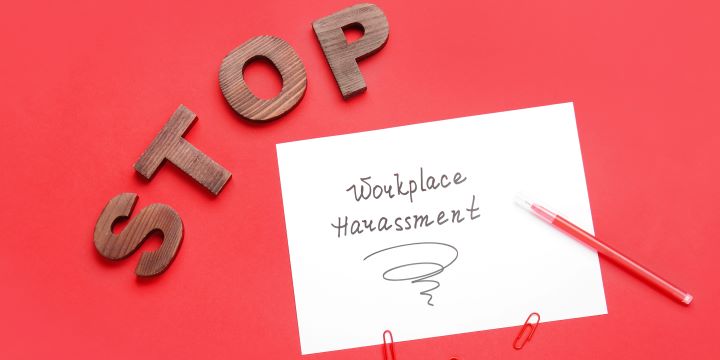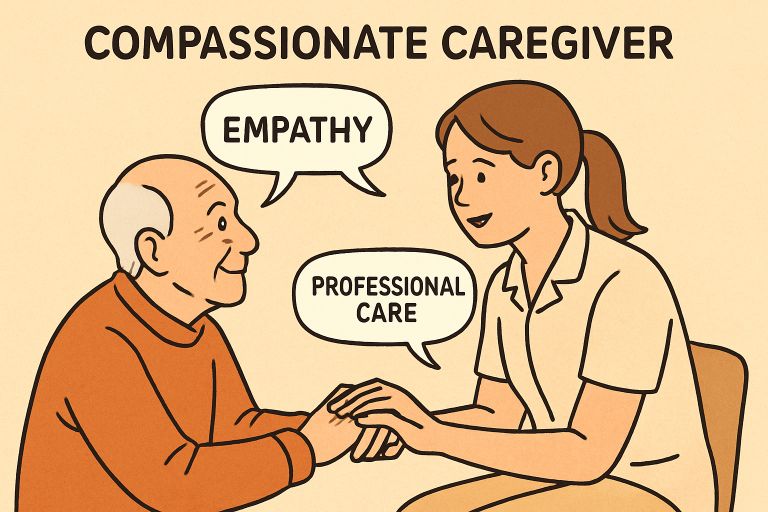Table of Contents:
- Understanding the Value of Sexual Harassment Training
- Critical Components of Effective Sexual Harassment Training
- Implementing Training Strategies that Work
- Measuring the Impact of Sexual Harassment Training
- Addressing Common Myths and Misconceptions
- Role of Leadership in Changing Workplace Dynamics
- Real-Life Examples of Positive Change Post-Training
- Adapting Training to Diverse Workforces
- Utilizing Technology in Sexual Harassment Training
- Preparing for Future Workplaces: Next Steps After Training
Key Takeaways:
- Understanding sexual harassment and implementing practical training is critical to a positive workplace culture.
- Leadership plays a fundamental role in maintaining respect and inclusivity in the workplace.
- Continuing evaluations and adaptations of sexual harassment training are crucial for long-term success.
Understanding the Value of Sexual Harassment Training
An inclusive and respectful workplace is where everyone can thrive, bringing their best selves to the professional environment without fear of retribution, discrimination, or harassment. The cornerstone of such an environment is awareness and understanding of what constitutes inappropriate behavior and the mechanisms to prevent and report it. A comprehensive sexual harassment training course is a legal formality and a fundamental business strategy to enhance workplace culture, productivity, and safety.
Harassment can erode the core values of equality and respect, leading to dire consequences for team dynamics and individual well-being. The psychological impact on victims can manifest as decreased motivation and disenchantment with the job, while the broader workplace deals with repercussions such as reduced employee engagement and retention, increased absenteeism, and a reputation for tolerating such behavior. Understanding sexual harassment through the lens of its effect on both individuals and the collective workforce underscores why it is a critical issue for businesses to address proactively.
Critical Components of Effective Sexual Harassment Training
The fabric of practical training is woven through with clarity, relevance, and interactivity. The program must start with a clear definition of sexual harassment, including nuances and subtle manifestations that could otherwise be ignored. Didactic presentations and interactive sessions showcasing scenarios employees might encounter can significantly aid this understanding. Crucial to this approach is establishing robust workplace policies, integrating legal standards that signal to employees the gravitas of the issue and the organization’s commitment to a zero-tolerance policy.
However, imparting information is only one aspect; cultivating a company-wide ethos that discourages harassment at all levels is equally paramount. An organization must demonstrate unequivocally that every report of harassment will be taken seriously, investigated thoroughly, and dealt with transparently. Training must also arm employees with the knowledge of how to effectively report instances of harassment and the processes that follow such reports. This structure of support and accountability is what truly defines a culture that upholds dignity for all employees.
Implementing Training Strategies that Work
Engaging in training methods, such as role-plays or mock scenarios, facilitates a better grasp of theoretical knowledge and its practical application. Incorporating a narrative element into the training, such as relatable stories or testimonials, can elicit empathy and a deeper understanding among participants. Bridges built between theory and its real-world repercussions enable employees to visualize their role in maintaining a harassment-free workspace.
The concept of periodicity is integral to the successful assimilation of these values. Regular refresher training sessions reignite awareness and commitment to these principles. This cyclical approach helps transform the once-a-year mandatory training from a forgettable obligation to an enduring cornerstone of the workplace ethos. It is a reminder that a safe and respectful workplace is an everyday commitment.
Measuring the Impact of Sexual Harassment Training
With a barometer for success, it is possible to gauge the effectiveness of any program. For sexual harassment training, this entails establishing quantitative and qualitative metrics that reflect the change in attitudes and behaviors. Instruments such as anonymous surveys before and following training, monitoring the frequency and nature of harassment complaints, and engaging in dialogues for qualitative feedback can signal the efficiency or deficiencies of the training. These indicators can translate into insightful data, creating a flexible framework for the ongoing improvement of the program.
Employee feedback functions as the cornerstone of this evolution. It provides a direct line of communication between the implementer of the training program and its beneficiaries. This reciprocal exchange enhances the training module based on end-user experience. It reinforces the belief that the organization is committed to continuous improvement regarding safety and respect in the workplace.
Addressing Common Myths and Misconceptions
Misunderstandings surrounding sexual harassment often lead to its perpetuation within the workplace. It’s a myth that physical acts solely represent harassment; in reality, verbal and non-verbal cues, as well as psychological intimidation, can be equally damaging. Another common myth is the idea that sexual harassment is always driven by sexual desire; however, it can also stem from a desire to dominate, degrade, or discriminate against individuals. An effective training program takes on the responsibility to debunk such myths and shed light on the intricate web of underlying issues contributing to workplace harassment. Providing a nuanced understanding, as outlined in the Avoiding Liability Bulletin, can correct erroneous beliefs and fortify a culture of respect in the workplace.
Clarifying legal definitions, alongside illustrative examples, enables employees to envision the scope of behaviors that can be labeled as harassment. This clarity not only supports victims in coming forward but also arms bystanders with the knowledgeable conviction to report incidents they witness. Transparency in this context serves as a deterrent and an educational tool, fostering an environment where harassment is actively identified and addressed.
Role of Leadership in Changing Workplace Dynamics
Leaders carry the mantle of cultivating and preserving a workplace ethos that cements the principles highlighted during sexual harassment training. In their capacity, leaders influence workplace norms through their actions and omissions, shaping how seriousness towards the training material is perceived. When leaders exemplify respect and zero tolerance for harassment, they reinforce that training is at the core of the company’s values rather than a mere procedural undertaking.
By demonstrating the desired behavior and swiftly and effectively responding to infractions, leaders can set a precedent for the rest of the organization. This approach builds trust and ensures that policies are in place. They are not hollow rhetoric but active commitments that are upheld and respected at the highest echelons of the organization.
Real-Life Examples of Positive Change Post-Training
Observing tangible improvements following comprehensive training can motivate organizations that are still on the fence about its efficacy. Companies posting reductions in harassment allegations and increased trust among employees willing to report uncomfortable encounters highlight the effectiveness of well-executed training programs. The resulting uptick in overall morale and harmonious workplace relations is a testament to the transformative power of these educational interventions. It is common for businesses that effectively implement such programs to find themselves showcased as case studies — benchmarks for others to emulate. The broader benefits, such as a decrease in the financial outlay resulting from harassment claims and legal tussles, bolster the case for investing in thorough and continuous sexual harassment training sessions.
Closer to industry standards, businesses see a boost in their standing among peers, with the side-effect of becoming more attractive to top-tier talent. In addition to safeguarding existing staff, this also serves as a draw for potential employees who value a safe and respectful work environment.
Adapting Training to Diverse Workforces
Modern workplaces are a mosaic of cultures, identities, and backgrounds, and this diversity needs to be mirrored in the deployment of sexual harassment training. Tailoring the training material to accommodate different cultural understandings of respect and personal space ensures every employee is well-equipped and feel marginalized. This can include multilingual materials, varying culturally resonant examples, and other delivery methods to reach a broad audience. The adaptability of a training program can define its success rate in varied demographic settings.
Additionally, taking workplace settings into account — whether it’s a corporate office, a manufacturing plant, or a remote virtual team — can make training scenarios more realistic and impactful for the participants. After all, harassment can take form in any work environment, and addressing the specific challenges of diverse workplaces reinforces the message that every employee’s safety is paramount.
Utilizing Technology in Sexual Harassment Training
Incorporating technology in training modules is a logical progression in the digital era. Online training platforms provide flexibility and scalability, enabling employees in different locations to participate simultaneously. This technological embrace ensures continuity in the messaging and quality of training content received, a significant advantage for organizations with a global workforce.
Yet, the successful deployment of such resources hinges on their accessibility. Technology should not be a barrier but rather an enabler; ensuring platforms are navigable and inclusive is paramount. By accommodating different levels of tech-savviness, the effectiveness of training is not limited by its delivery medium. Technology also provides a wealth of data that can be leveraged to continuously improve training programs, thereby enhancing their relevance and impact over time.
Preparing for Future Workplaces: Next Steps After Training
The conclusion of a sexual harassment training session should mark the beginning of a collective and ongoing aspiration for an equitable work culture. The progressive steps post-training involve:
- Regular policy reviews.
- Sustained communication on standards of behavior.
- A support system that facilitates the reporting and addressing of harassment.
These proactive measures underscore the organization’s dedication to milieus devoid of harassment and discrimination.
The dynamic landscape of modern workplaces calls for adaptive strategies to handle harassment issues. As workplace norms evolve, the need for continual learning and development in this realm cannot be overstated. An approach that incorporates both traditional methods and is responsive to new trends will make for a resilient, respectful, and inclusive future workplace.
For additional perspectives on the systemic impact of sexual harassment training, one can refer to NPR’s discussion on the subject, viewing it as vital to fostering a more considerable culture change within the corporate world.







